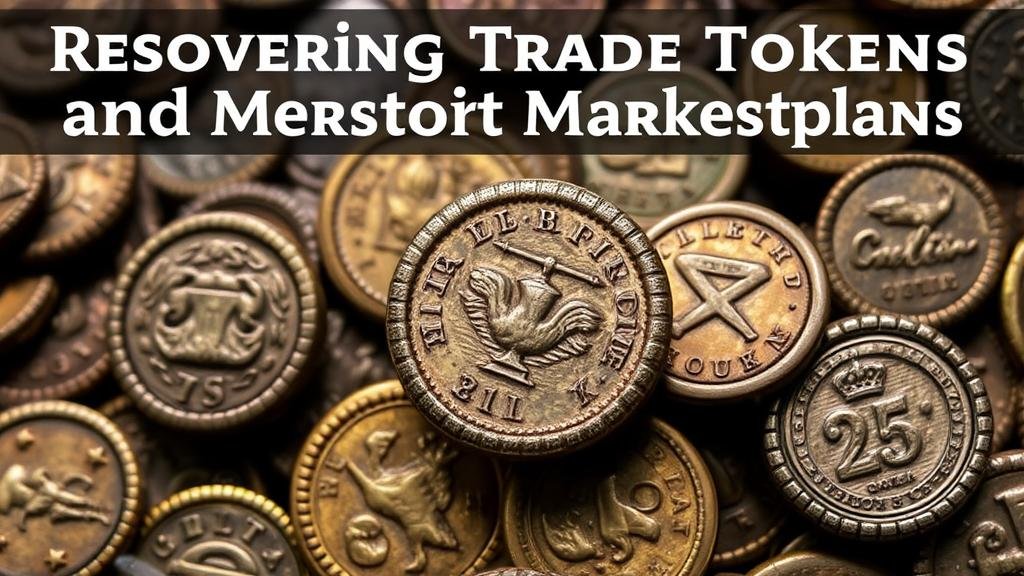Recovering Trade Tokens and Merchant Coins in Historic Marketplaces
Recovering Trade Tokens and Merchant Coins in Historic Marketplaces
The study and recovery of trade tokens and merchant coins serve as vital aspects of understanding economic and social systems of historical marketplaces. These artifacts not only provide valuable insights into the trade practices of the past but also reflect societal values, local economies, and the evolution of currency. This article explores the methodologies employed in recovering these tokens, examines historical contexts, and sheds light on specific case studies that illustrate the significance of this recovery process.
Historical Context of Trade Tokens
Trade tokens, often made from materials such as bronze, copper, or even clay, originated as local currency alternatives in various societies. In England, for instance, trade tokens were widely used during the late 17th century and into the 18th century, particularly in urban areas, where legal tender was scarce.
These tokens generally featured the name of the issuing merchant or business, often accompanied by identifying symbols or images. They were primarily issued by local businesses as a means to promote spending within specific communities and to facilitate easier transactions than the limited circulating coinage at the time.
Case Studies: Examples of Trade Tokens
- London Trade Tokens (1668-1672): During the Great Plague, traders and local businesses turned to tokens to sustain economic activity amidst the shortage of official currency. Over 10,000 different types of tokens were issued in London alone during this period, each providing a snapshot of local commerce.
- American Tokens (19th Century): In the United States, trade tokens emerged in the 19th century, particularly during the Gold Rush. e tokens often represented local businesses in mining towns and are now sought after by collectors for their historical significance. Companies like H. T. Moore, a local grocery store in California, produced tokens that are now valued for their unique designs.
Methodologies for Recovery
Archaeological Approaches
The recovery of trade tokens involves various archaeological methodologies, notably stratigraphy, excavation, and site surveys. Stratigraphy allows archaeologists to understand the temporal context of artifacts by analyzing its layers of soil. Excavation focuses on carefully removing layers to reveal artifacts in situ. Site surveys help identify areas of interest in marketplaces where tokens were commonly used.
Technological Innovations
Recent advancements in technology also enhance recovery efforts. Metal detection has become a widely adopted tool in uncovering metallic tokens, while ground-penetrating radar (GPR) allows for non-invasive subsurface exploration. The application of photogrammetry, which converts hundreds of photographs into 3D models, has proven priceless in analyzing sites without disturbing them.
Challenges in Recovery
Recovering trade tokens presents multiple challenges, particularly concerning legality and site preservation. excavation of historic sites often involves navigating complex regulations related to site ownership and artifact preservation. Plus, the risk of damage to delicate contexts during recovery can impede the collection of significant data.
Legal Considerations
Understanding the legal frameworks surrounding archaeological recovery is essential. For example, in many countries, laws dictate that finds from public lands must be reported to governmental authorities, and unauthorized excavations are punishable by law. Engaging in dialogue with both local communities and archaeologists ensures that these artifacts are properly documented and preserved.
Preservation Techniques
Once recovered, tokens and coins require careful preservation techniques. This may involve cleaning processes designed to remove corrosion without damaging the artifacts, and storing them in controlled environments to prevent further deterioration. For example, using inert materials for storage, coupled with proper humidity and temperature controls, prolongs the integrity of these historical items.
Real-World Applications and Significance
The recovery of trade tokens has significant implications for contemporary history, economics, and anthropology. Understanding how money functioned in past societies can provide lessons on modern economic behavior and community trust dynamics. Also, these tokens often serve as focal points for heritage tourism, where local markets or museums utilize recovering tokens to educate the public.
Engaging Local Communities
Local communities can play an important role in recovery efforts by participating in public archaeology projects. Such involvement fosters a sense of ownership over local heritage while educating citizens about their history. For example, workshops and community events centered around recovered tokens can promote awareness and appreciation for regional history.
Conclusion: Actionable Takeaways
In summary, recovering trade tokens and merchant coins in historic marketplaces is a multifaceted process that provides invaluable insights into past economic systems and social interactions. Through archaeological methodologies, technological advancements, and community engagement, professionals can unearth these artifacts responsibly. Stakeholders, including archaeologists, historians, and local communities, can collaborate to ensure these tokens are appropriately preserved and integrated into educational narratives.
- Engage with local communities through outreach programs to facilitate the recovery and appreciation of trade tokens.
- Use technology, such as metal detectors and GPR, to enhance recovery efforts while minimizing impact to sites.
- Adhere strictly to legal frameworks regarding archaeological recovery to ensure ethical practices in historical preservation.


